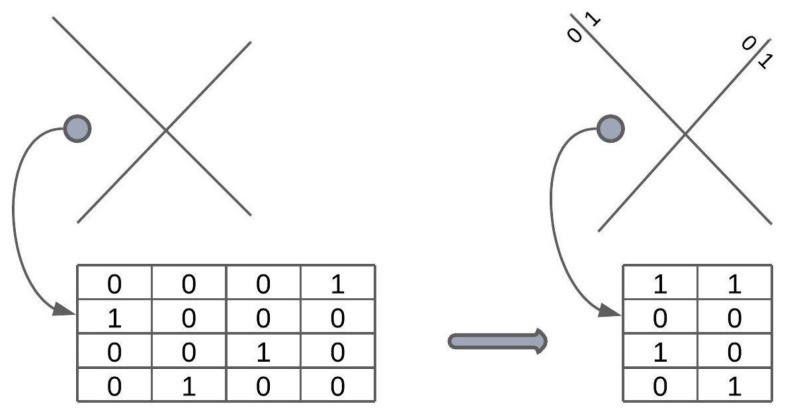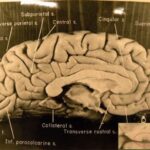Are you looking to understand how machine learning enhances data fusion techniques? At LEARNS.EDU.VN, we explore the crucial role of machine learning in data fusion, which combines data from multiple sources to create comprehensive, insightful information. This article will guide you through various machine learning methods used for data fusion, showing how they improve accuracy and efficiency.
Unlock the secrets of advanced data integration and analytics with LEARNS.EDU.VN. Explore topics like sensor fusion, multimodal data analysis, and integrated data processing to enhance your understanding and skills.
1. What is Machine Learning for Data Fusion?
Machine learning for data fusion involves using machine learning algorithms to combine data from multiple sources into a unified, consistent, and more useful representation. This process enhances the accuracy, reliability, and completeness of the information derived from the data. Data fusion is essential in various applications, including robotics, remote sensing, medical diagnosis, and financial analysis.
2. Why Use Machine Learning in Data Fusion?
Machine learning enhances data fusion by providing sophisticated methods for:
- Handling Complexity: Machine learning algorithms can manage the complexity of integrating diverse data types, such as numerical, textual, and visual data.
- Improving Accuracy: By learning from data, these algorithms can correct errors, fill gaps, and resolve inconsistencies, leading to more accurate results.
- Automating Processes: Machine learning automates the data fusion process, reducing the need for manual intervention and improving efficiency.
- Adapting to Change: Machine learning models can adapt to changes in data sources and data quality, ensuring robust and reliable performance over time.
3. What Are the Key Applications of Machine Learning for Data Fusion?
Machine learning for data fusion is used in various industries and applications, including:
- Robotics: Combining sensor data to improve navigation and object recognition.
- Remote Sensing: Fusing satellite imagery and other data sources to monitor environmental changes.
- Medical Diagnosis: Integrating patient data from multiple sources to improve diagnostic accuracy.
- Financial Analysis: Combining market data, news, and other information to make better investment decisions.
- Autonomous Vehicles: Fusing data from cameras, lidar, and radar sensors for enhanced perception and decision-making.
4. What Types of Data (Modalities) Are Used in Machine Learning for Data Fusion?
According to a study in Sensors Journal, there are four main data groups:
- Tabular Data: Observations stored as rows with features as columns.
- Graphs: Observations are vertices with features as edges between vertices.
- Signals: Observations are files (e.g., images, audio) with numerical data.
- Sequences: Observations as characters, words, or documents.
5. What Are the Key Techniques for Multimodal Data Fusion?
Multimodal data fusion combines single modalities to derive a multimodal representation. Here are key considerations:
- Intermodality: Combining modalities improves model predictions.
- Cross-modality: Inseparable interactions between modalities are essential for conclusions.
- Missing Data: Robustness to missing modalities is crucial.
5.1. Early Fusion
Early fusion, also known as feature-level fusion, involves combining data from different modalities at an early stage, typically by concatenating feature vectors.
- Process: Modalities are combined before training the model.
- Advantages: Simple implementation and potential to capture correlations between modalities.
- Disadvantages: Can be sensitive to noisy or irrelevant features and may require significant preprocessing to align data.
5.2. Late Fusion
Late fusion, or decision-level fusion, involves training separate models for each modality and then combining their outputs to make a final decision.
- Process: Models are trained independently, and their outputs are connected.
- Advantages: Flexible and can handle modalities with different characteristics.
- Disadvantages: May not capture complex interactions between modalities.
5.3. Sketch Representation
Sketch representation transforms modalities into a common space using hashing.
- Process: Modalities are transformed into mutual space with hash functions.
- Advantages: Modality independent, robust to missing modalities, and easily interpreted.
- Disadvantages: Can result in loss of information about specific observations.
6. How Do Deep Learning Models Contribute to Data Fusion?
Deep learning models have become increasingly popular in multimodal fusion due to their ability to automatically learn complex representations from high-dimensional data. According to research from Warsaw University of Technology, the prominent approaches are:
- Deep Belief Nets
- Stacked Autoencoders
- Convolutional Networks
- Recurrent Networks
These models can handle the complexity and heterogeneity of multimodal data, leading to improved performance in various tasks.
7. What Are the Advantages of Hashing Ideas in Multimodal Data Fusion?
Hashing models are a promising approach, identifying manifolds in the original space and transforming data to lower-dimensional spaces while preserving observation similarities. The main advantages are:
- Cost-Effective: Efficient in terms of memory usage.
- Manifold Detection: Detects and works within manifolds.
- Semantic Preservation: Preserves semantic similarities between points.
- Data Independence: Usually data-independent.
- Robustness: Suitable for production cases as they are robust to any data changes.
8. What Are the Challenges in Evaluating Multimodal Data Fusion Algorithms?
Evaluating multimodal data fusion algorithms is complex, and there is no universal metric to measure captured inter- and cross-modalities. Common evaluation methods include:
- Comparison to Unimodal Models: Comparing performance scores (precision, AUC) to models considering single modalities.
- Similarity Preservation: Assessing whether similar observations are comparable in their multimodal representations.
- Flexibility and Simplicity: Considering the model’s flexibility and simplicity in addition to performance scores.
9. What Datasets Are Commonly Used for Machine Learning for Data Fusion Research?
According to research highlighted in Sensors Journal, the popular datasets used for machine learning and data fusion include:
- Amazon Reviews: Used for multiclass classification with textual and visual modalities.
- MovieLens25M: Used for multilabel genre classification with textual, visual, and graph data.
- MovieLens1M: Used for binary gender classification with textual and visual modalities.
10. What Are the Key Criteria for Choosing a Data Fusion Technique?
Selecting the right data fusion technique depends on several factors:
- Modality Impact: Consider the influence of each modality on the machine learning problem.
- Task Type: The nature of the task (classification, regression, etc.) influences the choice.
- Memory Constraints: Memory usage during training and prediction is a key consideration.
10.1. Guidelines for Technique Selection
- Late Fusion: Use when one modality is dominant or when every unimodal model achieves high performance.
- Early Fusion: Use when modalities are dependent or when all unimodal models yield similar results.
- Sketch: Use when memory efficiency is crucial, such as in recommender systems.
FAQ: Machine Learning for Data Fusion
1. What is the primary goal of machine learning in data fusion?
The primary goal is to combine data from multiple sources to create a unified, consistent, and more useful representation, enhancing accuracy and reliability.
2. How does machine learning handle data inconsistencies in data fusion?
Machine learning algorithms learn from data to correct errors, fill gaps, and resolve inconsistencies, leading to more accurate results.
3. Can machine learning automate the data fusion process?
Yes, machine learning automates the data fusion process, reducing the need for manual intervention and improving efficiency.
4. What are the benefits of using early fusion in machine learning?
Early fusion is simple to implement and captures correlations between modalities, making it effective when modalities are interdependent.
5. When is late fusion preferred in machine learning for data fusion?
Late fusion is preferred when one modality is dominant, or when every unimodal model achieves high performance.
6. How does sketch representation aid in memory efficiency in data fusion?
Sketch representation transforms data into very short vectors, optimizing storage and memory usage.
7. What role do deep learning models play in multimodal data fusion?
Deep learning models automatically learn complex representations from high-dimensional data, improving performance in various tasks.
8. Why is robustness to missing data important in data fusion?
Robustness ensures that the data fusion process remains reliable even when some modalities are unavailable.
9. What industries benefit most from machine learning for data fusion?
Industries such as robotics, remote sensing, medical diagnosis, financial analysis, and autonomous vehicles benefit significantly.
10. What are the key criteria for evaluating multimodal data fusion algorithms?
Key criteria include comparison to unimodal models, similarity preservation, flexibility, and simplicity.
Data fusion techniques are constantly evolving, and mastering these skills can significantly boost your career prospects. LEARNS.EDU.VN offers resources and courses to help you stay ahead in this dynamic field.
For more in-depth knowledge and skill enhancement in machine learning and data fusion, visit LEARNS.EDU.VN. We offer expert guidance and comprehensive resources to help you succeed.
Ready to dive deeper?
Explore LEARNS.EDU.VN for more articles and courses:
- Detailed Guides: Step-by-step instructions and clear explanations.
- Expert Insights: Learn from industry professionals and educators.
- Comprehensive Courses: Structured learning paths for all skill levels.
Contact us for more information:
- Address: 123 Education Way, Learnville, CA 90210, United States
- WhatsApp: +1 555-555-1212
- Website: LEARNS.EDU.VN
Take the next step in your education and career with learns.edu.vn today!

